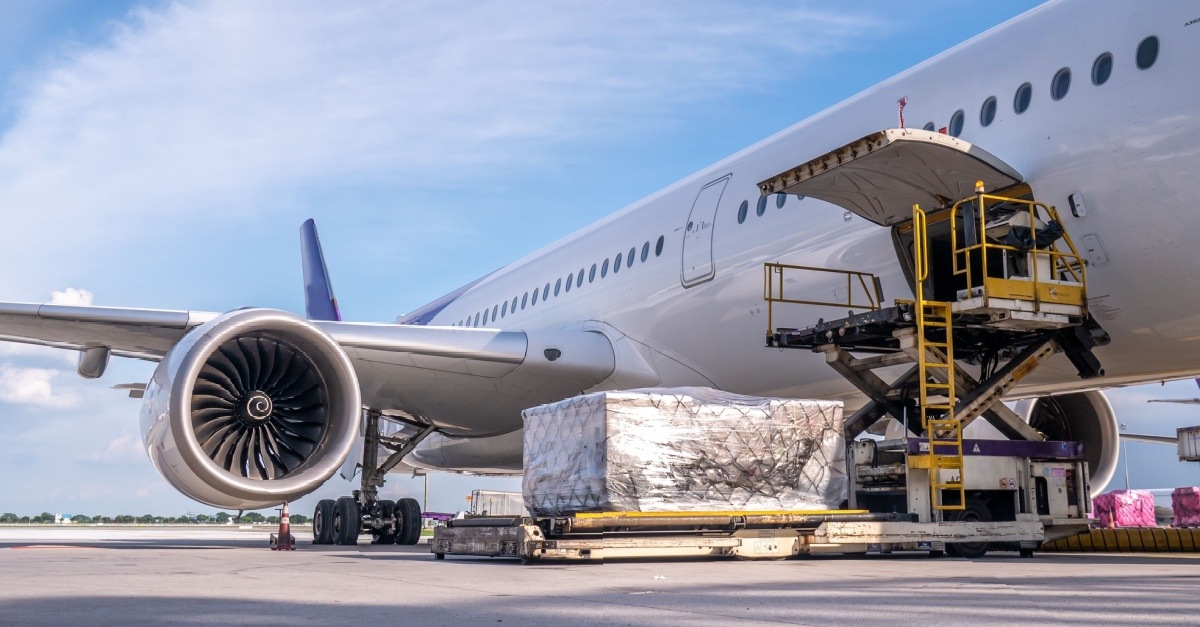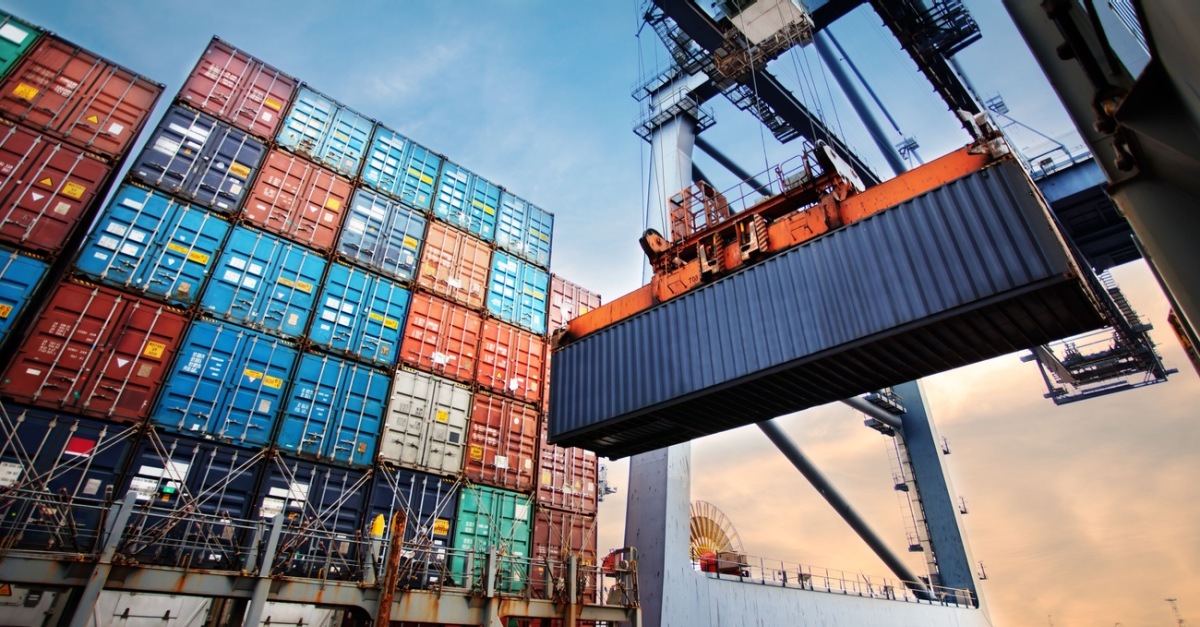3 min read
Logistics and Supply Chain: Economic Indicators Up; Sector Still Feeling Pain
One month into 2024, headlines are noting challenges in the sector, including layoffs and lower results from bellwether firms. However, the broader...
Market indicators of the health of supply chains here in Q2 of 2024 were a mixed bag recently. A trade group said “normalcy” won’t be achieved in 2024, while the Fed called the economy and supply chains “resilient” in its latest “beige book” polling of company executives. Things are looking brighter at the Port of Baltimore, where two shipping lanes have reopened, with a third soon to follow, but a full reopening is weeks away.
3PLs have also demonstrated resilience in a difficult market, but logistics fraud remains a concern, and leaders are not waiting around for federal enforcement. And warehouse vacancy rates remain high in California and nationwide, a concerning marker of slower commerce activity and shrinking demand. Here’s a digest of some of the top stories in logistics and supply chain.
A joint report by the Association of Supply Chain Management and KPMG concluded that while there were improvements in supply chain stability in 2023, a return to normalcy — whatever that is — isn’t likely in 2024. Instability is still being caused by factors such as cross-border patrol closures between the U.S. and Mexico, rising Mideast tensions, and Red Sea attacks.
Positive signs included the growth in nearshoring efforts in Canada and Mexico, reducing reliance on Asian suppliers, and the impact of the Baltimore bridge collapse being less than expected initially. "While supply chain challenges do persist, the overall return to increased levels of stability is a testament to the incredible efforts of countless supply chain professionals,” said ASCM CEO Abe Eshkenazi.
Inventory reductions and greater optimization were also given as positive indicators, as was an improvement in the labor picture due to lower unemployment and increased automation.
Despite disruptions from ongoing Red Sea hostilities – including the April 13 capture by Iranian forces of an MSC vessel – and the Port of Baltimore closing, the U.S. economy and supply chains appear resilient.
This was the finding of the latest “beige book” report from the Federal Reserve, which polls businesses across its 12 districts. Mention of the word “shortages,” a key indicator, happened only 12 times in the April report, compared to a high of 70 in August 2021.
The Port of Los Angeles, the nation’s busiest, is seeing a healthy surge in traffic, with loaded import volume up 19% in March, while exports increased 47%, the highest level since January 2020.
Freight booking and management platform Freightos reported a 14% jump in gross booking value in Q1, blowing a management estimate of no more than 2% growth out of the water.
Work to remove containers to refloat and relocate the Maersk vessel Dali in the Port of Baltimore is expected to take weeks, authorities said. About 140 containers will have to be removed before the vessel can be relocated to the nearby CSX terminal.
Meanwhile, two harbor channels have been reopened, with a third expected to be cleared later this month, allowing the majority of shipping traffic to flow in and out of the port. S&P is projecting a minor economic impact from the bridge collapse, mostly in the way of price increases as manufacturers pass along increased supply chain costs.
The Port of New York and New Jersey has been able to take on much of the diverted cargo traffic from Baltimore, a seamless process as vessels often stop there first and continue on down the East Coast.
Vacancy rates for industrial real estate in California, including warehouses and fulfillment centers, are at their highest level in a decade as shrinking consumer demand is causing a pullback in development and leasing.
Real estate brokerage Colliers reports that the falloff has gone on for the past two years, from a 2022 high during the pandemic-fueled e-commerce boom. In greater Los Angeles, the vacancy rate for industrial buildings hit 4.1% in the first quarter, compared to just 1.5% a year earlier.
The vacancy rate in California’s Inland Empire east of Los Angeles, a mecca for fulfillment and logistics development, was more pronounced, at 6.2%. This was the highest level in 11 years. What’s happening in California is reflective of a broader nationwide trend, as investment and development have cooled substantially.
According to commercial real estate firm Cushman & Wakefield, the average warehouse vacancy rate was 5.2% in Q4, up sequentially from 4.6% in Q3 and 3.1% in Q4 of 2023. Giant warehouse REIT Prologis is also dialing back expectations, revising its 2024 outlook due to lower-than-expected demand, even though revenue was up 11% in Q1.
3PLs have done a good job of weathering a tough market the past couple of years, but fraud is a major concern, the head of an industry association told attendees at the Transportation Intermediaries Association’s 2024 Capital Ideas Conference, held April 10-13 in Phoenix.
Fraud comes in the way of increasing cargo theft, carrier identity fraud, and the practice of “double brokering,” where a criminal posing as a carrier accepts a load, then illegally re-brokers it to a legitimate carrier, according to TIA president Anne Reinke.
“Our goal is to change the lack of enforcement from our federal partners,” Reinke said. “We are not waiting for the government to act — we do not have that luxury — but we are doing all that we can to help our members raise the attention on this issue so it doesn’t metastasize to an even bigger, untreated problem.”
Amazon’s director of global robotics, mechatronics, and sustainable packaging said that robotics, AI, and other forms of warehouse automation are actually enhancing jobs at the e-commerce giant, not stealing them, leading to new categories of employment.
"It is a myth that technology and robots take out jobs," Stefano La Rovere told CNBC. The company said using new technologies has enhanced over 50,000 jobs in its European fulfillment and sortation centers.
The company is pushing back against widespread fears among workers and labor advocates that different forms of automation are going to eliminate thousands of warehouse jobs in the near future.
In the near term, warehouse automation is helping companies augment depleted workforces, deal with high churn rates and boost productivity. In other Amazon news, the company is giving its 3P sellers a one-month reprieve from new low-inventory charges, after many of them complained.
In a move that will boost the Chinese company’s efforts to strengthen its foothold in the American market, supply chain platform Flexport has become a logistics partner for fast-fashion giant Shein.
Through the partnership, merchants on Shein’s marketplace will be able to connect their storefront to Flexport’s seller portal. Services will include inventory synchronization, fulfillment and shipping, and automated order fulfillment. The partners promise “less manual work, more sales” and greater efficiency for participating merchants.
Companies in several states have announced nearly 1,300 workers are being laid off in logistics roles, as they look to right-size operations in the face of lower demand and decreased volume.
According to FreightWaves, this includes 677 warehouse workers, truck drivers, and others at Universal Logistics in Michigan, servicing the auto parts industry; 235 workers laid off by Swissport Cargo Services at a cargo handling facility in Atlanta, after losing a contract to Amazon; 230 jobs cut by Kroger as it permanently closes delivery hubs in San Antonio, Austin, and Miami; 114 laid off at RXO Managed Transport in Warren, Mich. (a brokerage platform spun out of XPO Logistics in 2022); 51 let go from packaging solutions company Nosco Inc., in Texas; and 29 laid off from a trucking facility in Romeoville, Ill., operated by Ryder Integrated Logistics.
Data from the Bureau of Labor Statistics showed that employment in warehouses and storage fell from a high of 1.942 million in May 2022 to 1.757 million in March 2024. It’s still well ahead of the pre-pandemic level of 1.321 million in February, 2020.
A coalition of farmers and truckers warned that a recent California court decision allowing that state to set its own zero-emission standards would be catastrophic for supply chains, forcing many smaller carriers out of business. The Biden administration issued a waiver allowing California to do so, in effect sunsetting fossil fuel vehicles, which resulted in 17 lawsuits from state attorneys general.
"Obviously, this thing is going to cost untold millions, billions of dollars that we have no way that we’re going to pay for,” independent Ohio trucker Monte Wiederhold said on Fox & Friends First.
The California Air Resources Board (CARB) Advanced Clean Trucks (ACT) rule requires manufacturers to make zero-emission vehicles (ZEV) an increasing percentage of their sales in California between 2024 and 2035. At that point, ZEVs would have to represent 55% of Class 2b-3 truck sales, 75% of Class 4-8 straight truck sales, and 40% of truck-tractor sales. The related Advanced Clean Fleets (ACF) rule calls for fleet operators to only purchase ZEVs by 2036.
However, California needed an EPA waiver to impose higher air quality standards than federal ones. An appellate court in Washington, D.C., upheld the EPA waiver earlier this month, negating the state lawsuits.
In a contentious election year, with war heating up in Israel and the Red Sea still not a safe passage, there’s a lot of uncertainty in the air. On a positive note, the CEO of Bank of America noted consumer spending is growing faster for discretionary items than for food, a sign of normalization.
For shippers, a strong logistics partner is an extremely valuable asset at any time, especially in a challenging environment like the one we find ourselves in. Productiv, a results-driven 3PL, helps shippers gain efficiency and improve performance using engineered solutions based on lean principles. Productiv’s industry-tested solutions include warehousing, transportation management, returns/reverse logistics, supply chain data analytics, and a wide range of value-added services. Speak to an expert today to learn more.
Get ideas on how to delight your customers with delivery on their timeline.

3 min read
One month into 2024, headlines are noting challenges in the sector, including layoffs and lower results from bellwether firms. However, the broader...

4 min read
With Houthi rebels continuing their terrorist campaign against ocean cargo ships transiting the Red Sea – most recently targeting two vessels on June...

3 min read
A positive 3PL report, especially regarding value-added services and distribution, and some much-needed technology investment in drayage, were among...
